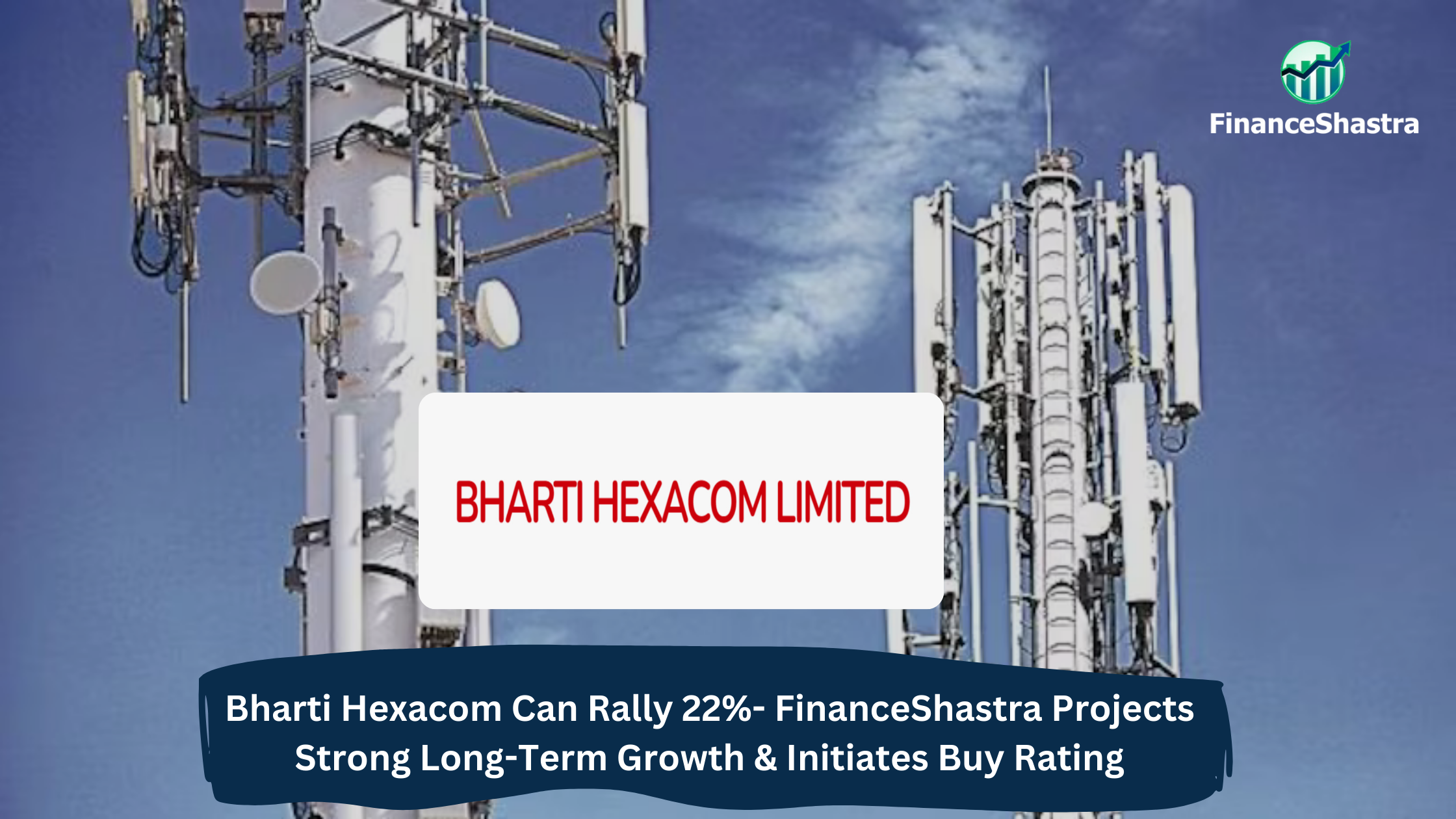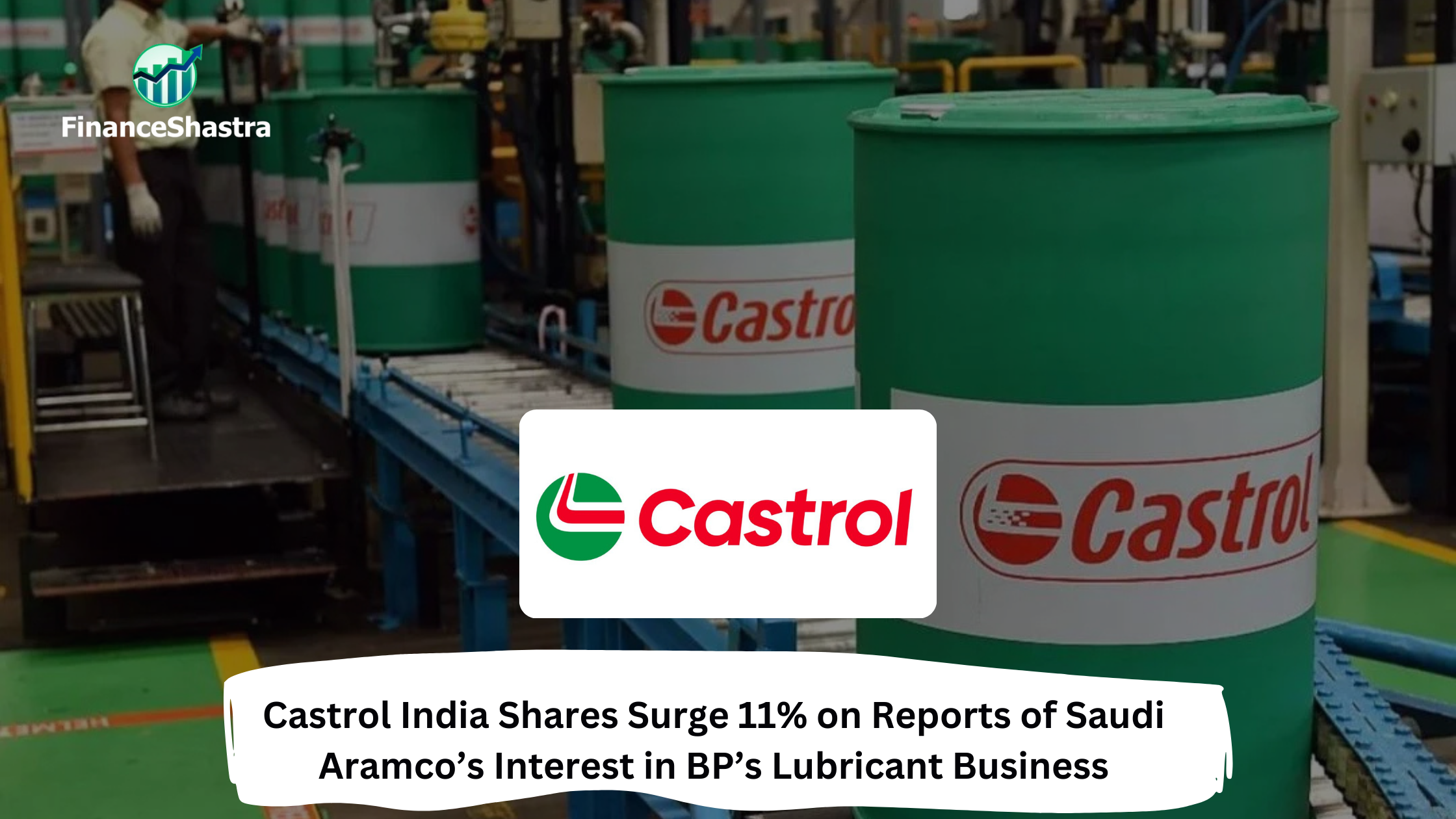Bharti Hexacom Can Rally 22%- FinanceShastra Projects Strong Long-Term Growth & Initiates Buy Rating
Business and Industry Overview:
Bharti Hexacom Ltd is a company that provides mobile and internet services. It is part of Bharti Airtel, which is a big telecom company in India. Bharti Hexacom works in Rajasthan and the Northeast. It helps people make calls, send messages, and use the internet. It gives 2G, 3 G, and 4G services. It helps Airtel grow in small towns and villages. Many people in these areas need better mobile and internet services.
In 2024, Bharti Hexacom started selling shares to the public. This is called an IPO (Initial Public Offering). This means people can buy small parts of the company. When more people invest, the company gets money to grow. Bharti Hexacom makes good money because it uses Airtel’s strong network. Airtel is a trusted name, so many people use Bharti Hexacom’s services.
The company wants to expand its network in the future. It wants to reach more people in more places. It also wants to bring 5G technology to its areas. Many people in Indiauseg mobile phones and the internet every day. The company wants to give them faster and better internet. It wants to improve its services so that everyone can stay connected easily.
India has the second-largest telecom market in the world. As of May 2024, the total number of telephone subscribers was 1.2 billion, and the teledensity was 85.87%. The demand for 5G smartphones is rising, making India the second-largest market for 5G devices after China. India holds 13% of the global 5G smartphone market, while China leads with 32%. The smartphone market grew by 3% in volume and 12% in value in Q3 2024. Major telecom companies in India include Jio (474.61 million users), Airtel (387.76 million users), Vodafone Idea (218.15 million users), and BSNL (86.32 million users). The number of wired broadband users stood at 41.31 million in May 2024. Wireless broadband subscriptions reached 884.01 million in FY24. India’s internet subscribers grew to 936.16 million by April- December 2024. The country also saw over 28 billion mobile app downloads in 2022, accounting for 5% of the global total. The government is investing heavily in 5G infrastructure, with plans to fiberize telecom towers and deploy 1.2 million new towers. As of now, only 36% of towers are fiberized. The telecom sector’s gross revenue stood at Rs. 2.4 lakh crore (US$ 29 billion) in FY24. The government increased Foreign Direct Investment (FDI) from 74% to 100%, attracting US$ 39.32 billion in FDI between April 2000 and March 2024. The Bharat 6G Alliance is working with European telecom companies to develop 6G technology. Investments in data centers are also growing, with Rs. 2,000 crore (US$ 242.33 million) invested in Pune in May 2023. Companies like Jio, Airtel, and Google are making big investments in India’s digital growth. The government launched a Rs. 12,195 crore (US$ 1.65 billion) Production Linked Incentive (PLI) scheme, encouraging telecom equipment manufacturing.
Latest Stock News:
Bharti Hexacom is a company that provides mobile and internet services under the Airtel brand. It operates in Rajasthan and the Northeast. Experts like its shares more than those of its parent company, Bharti Airtel, because it has less risk and better growth opportunities. In these areas, fewer companies provide services, and internet use is low, so Bharti Hexacom can grow faster. Its share price started at ₹570 when it first sold shares (IPO price). It later went up to ₹1,600 but then dropped by 18%. Even after the drop, the share price is 134% higher than its starting price. Experts from Motilal Oswal believe the stock price can rise to ₹1,625, which is 22% more than now. The company makes more money per customer than many others. Its areas have less competition, which helps it earn more. Airtel’s chairman, Sunil Bharti Mittal, said Airtel might buy a company outside India, which could be risky. However, Bharti Hexacom is focused only on India, which makes it safer. The company is expected to grow fast in the next few years. 9 out of 12 experts say it is good to buy, 2 say hold, and 1 says sell. Bharti Hexacom is also expected to make 23% more profit every year from 2024 to 2027. Even though its stock dropped 0.7% today, experts still believe it will keep growing in the future.
Potentials:
Bharti Hexacom wants to grow bigger in the future. It will increase mobile and internet services in Rajasthan and the Northeast. These places have fewer internet users, so more people will start using data and broadband. This will help the company earn more money. It will also make its network better and increase internet speed. Experts believe the company will grow by 23% every year from 2024 to 2027.
Bharti Hexacom wants more people to use its services. It will change non-internet users into internet users. It will also move prepaid customers to postpaid plans. The company will improve broadband services and offer better plans. This will help it make more money.
Its parent company, Bharti Airtel, may buy a company outside India. However, Bharti Hexacom will only work in India. This makes it less risky and more stable. The company will face less competition because it is working in less crowded areas. Experts say that by the end of 2025, Bharti Hexacom will become the top company in Rajasthan and the Northeast.
If mobile and broadband prices go up in the future, Bharti Hexacom will earn even more money. Experts think its share price will increase to ₹1,625, which is 22% more than now. Even though its share price dropped a little today, experts believe the company will keep growing.
Analyst Insights:
- Market capitalisation: ₹ 68,500 Cr.
- Current Price:₹ 1,370
- 52-Week High/Low: ₹ 1,609 / 755
- Stock P/E: 65.2
- Dividend Yield: 0.29 %
- Return on Capital Employed (ROCE): 14.0 %
- Return on Equity: 14.0 %
Bharti Hexacom is growing well. Its sales have increased by 14% every year in the last five years. The company’s profit has grown by 22% per year. It is making more money than before. Its profit margin improved from -2 % in 2019 to 47% in 2024. This means the company is earning more after paying costs. It also collects money from customers faster now. Earlier, it took 57.6 days, but now it takes only 22.9 days.
However, the stock is very expensive. Its P/E ratio is 65.2, which is much higher than that of other companies. It is trading at 13.1 times its book value, which means investors are paying more for each share than its actual worth. The ROE is 14%, which is not very high. The company also has a high debt of ₹8,105 crore. It does not pay much dividend, as the yield is only 0.29%.
Because of this, long-term investors can hold the stock as the company grows. But new investors should wait because the stock is costly now.










